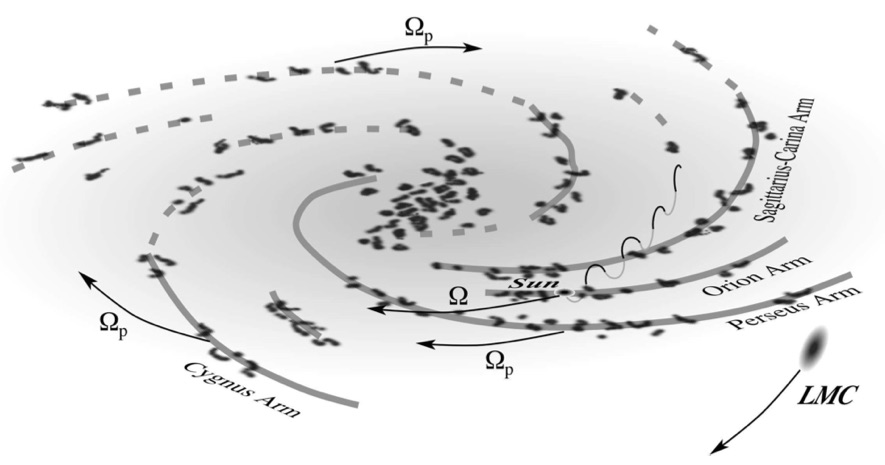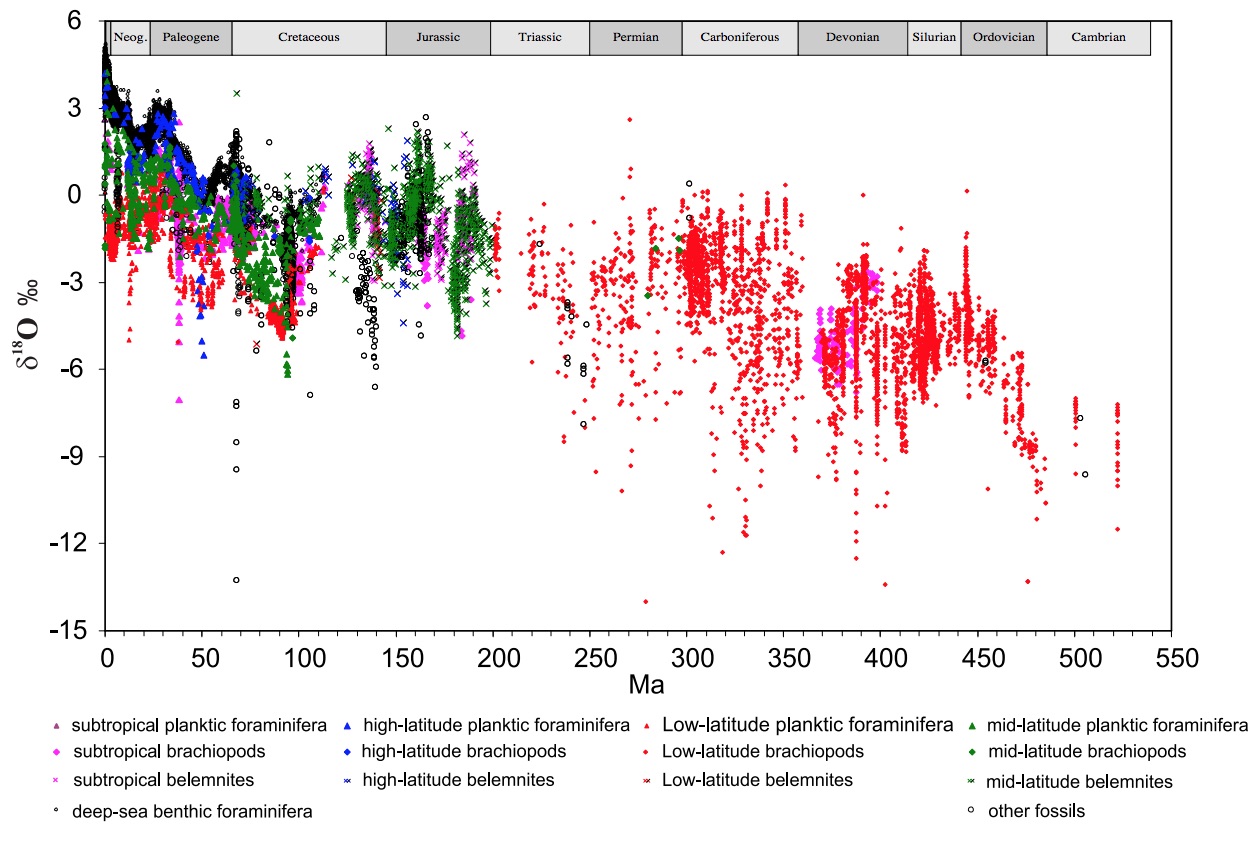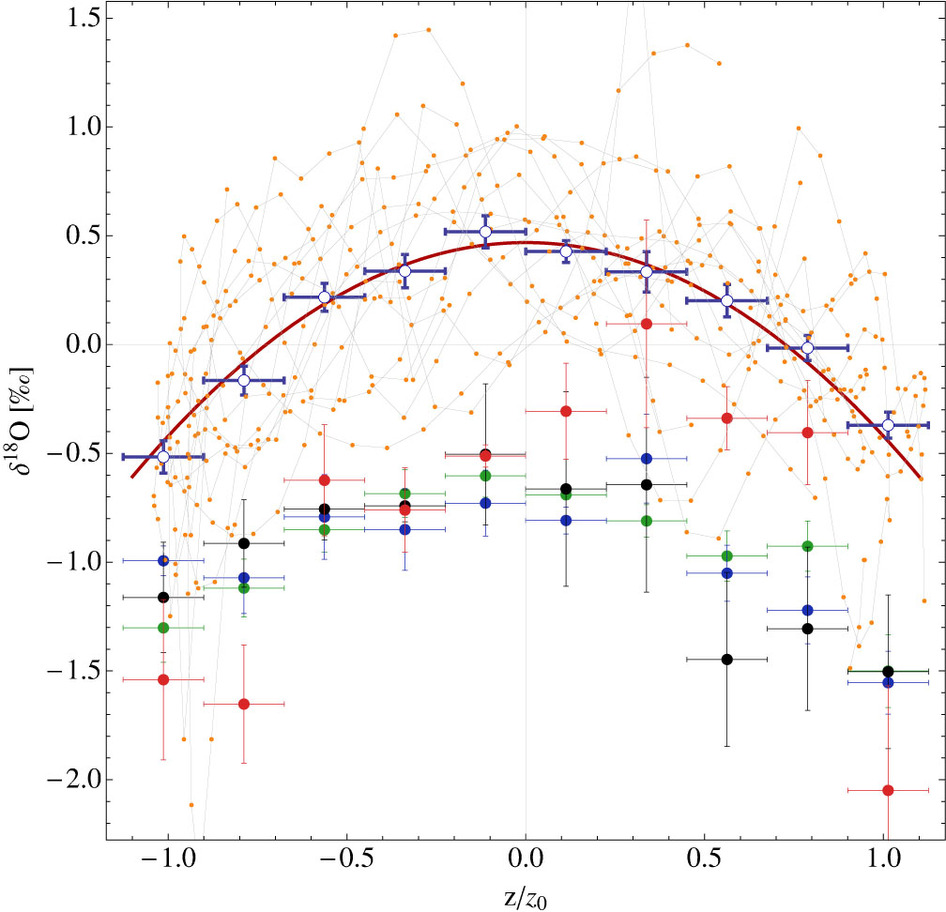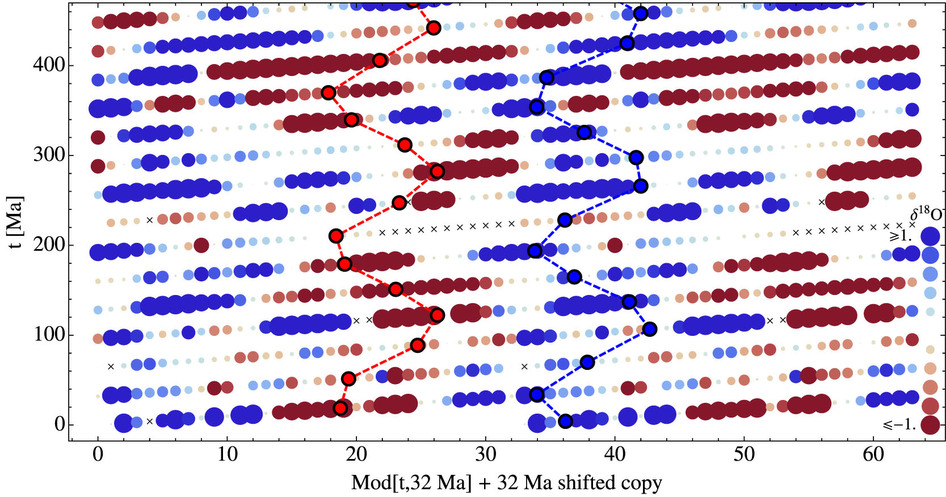Sights from a Field Trip in the Milky Way: From Paleoclimatology to Dark Matter
Blog topic:
The original article is found here, and a pdf version here.
In 1913, Victor Hess measured the background level of atmospheric ionization while ascending with a balloon. By doing so, he discovered that Earth is continuously bathed in ionizing radiation. These cosmic rays primarily consist of protons and heavier nuclei with energies between their rest mass and a trillion times larger. In 1934, Walter Baade and Fritz Zwicky suggested that cosmic rays originate from supernovae, the explosive death of massive stars. However, only in 2013 was it directly proved, using γ-ray observations with the FERMI satellite, that cosmic rays are indeed accelerated by supernova remnants. Thus, the amount of ionization in the lower atmosphere is almost entirely governed by supernova explosions that took place in the solar system’s galactic neighborhood in the past twenty million years or so.
Besides being messengers from ancient explosions, cosmic rays are extremely interesting because they link together so many different phenomena. They tell us about the galactic geography, about the history of meteorites or of solar activity, they can potentially tell us about the existence of dark matter, and apparently they can even affect climate here on Earth. They can explain many of the past climate variations, which in turn can be used to study the Milky Way.
The idea that cosmic rays may affect climate through modulation of the cosmic ray ionization in the atmosphere goes back to Edward Ney in 1959. It was known that solar wind modulates the flux of cosmic rays reaching Earth—a high solar activity deflects more of the cosmic rays reaching the inner solar system, and with it reduces the atmospheric ionization. Ney raised the idea that this ionization could have some climatic effect. This would immediately link solar activity with climate variations, and explain things like the little ice age during the Maunder minimum, when sunspots were a rare occurrence on the solar surface.
In the 1990s, Henrik Svensmark from Copenhagen brought the first empirical evidence of this link in the form of a correlation between cloud cover and the cosmic ray flux variations over the solar cycle. This link was later supported with further evidence including climate correlations with cosmic ray flux variations that are independent of solar activity, as I describe below, and, more recently, with laboratory experiments showing how ions play a role in the nucleation of small aerosols and their growth to larger ones.
In 2000, I was asked by a German colleague about possible effects that supernovae could have on life on Earth. After researching a bit, I stumbled on Svensmark’s results and realized that the solar system’s galactic environment should be changing on time scales of tens of millions of years. If cosmic rays affect the terrestrial climate, we should see a clear signature of the galactic spiral arm passages in the paleoclimatic data, through which we pass every 150 million years. This is because spiral arms are the regions where most supernovae take place in our galaxy. Little did I know, it would take me on a still ongoing field trip to the Milky Way.
The main evidence linking the galactic environment and climate on Earth is the exposure ages of iron meteorites. Exposure ages of meteorites are the inferred duration between their breakup from their parent bodies and their penetration into Earth’s atmosphere. They are obtained by measuring the radioactive and stable isotopes accumulated through interaction with the cosmic rays perfusing the solar system. It turns out that if one looks at exposure ages a bit differently than previously done, by assuming that meteorites form at a statistically constant rate while the cosmic ray flux can vary, as opposed to the opposite, then the cosmic ray flux history can be reconstructed. It exhibits seven clear cycles, which coincide with the seven periods of ice-age epochs that took place over the past billion years. On longer time scales, it is possible to reconstruct the overall cosmic ray flux variations from a changed star formation rate in the Milky Way, though less reliably. The variable star formation rate can explain why ice-age epochs existed over the past billion years and between one and two billion years ago, but not in other eons.
I later joined forces with Canadian geochemist Ján Veizer who had the best geochemical reconstruction of the temperature over the past half billion years, during which multicellular life left fossils for his group to dig and measure. His original goal was to fingerprint the role of CO2 over geological time scales, but no correlation with the paleotemperature was apparent. On the other hand, his temperature reconstruction fit the cosmic ray reconstruction like a glove. When we published these results, we instantly became personae non gratae in certain communities, not because we offered a data-supported explanation to the long-term climate variations, but because we dared say that CO2 can at most have a modest effect on the global temperature.
Besides the spiral arm passages, our galactic motion should give rise to a faster cosmic ray flux modulation—in addition to the solar system’s orbit around the galaxy, with roughly a 250-million-year period, the solar system also oscillates perpendicular to the galactic plane. Since the cosmic ray density is higher at the plane, it should be colder every time the solar system crosses it, which depending on the exact amount of mass in the disk should be every 30 to 40 million years.

Figure 1: The motion of the solar system through the galaxy. The main components (relevant to climate on Earth) are the periodic passages through the galactic spiral arms as it revolves around the galaxy, and the motion of the solar system perpendicular to the galactic plane (the horizontal “wavelength” of that motion is actually longer than portrayed in the cartoon).
First, analysis of the best database of the kinematics of nearby stars, that of the Hipparcos satellite, pointed to a low density at the galactic plane, which in turn implied a longer period for the plane crossings, around once every 40 million years. Second, it was widely accepted in the cosmic ray community that cosmic rays should be diffusing around the galactic disk in a halo that is much larger than the stellar disk itself. This would imply that the 300 light years that the solar system ventures away from the galactic plane could not explain the 1 to 2°C variations implied for the geochemical record. Without a way to reconcile these, there was not much we could do. Perhaps the 32 million years was just a random artifact.
As time progressed, however, the improved geochemical record only showed that the 32-million-year signal became more prominent. In fact, fifteen cycles could now be clearly seen in the data. But something else also happened. My colleagues and I began to systematically study cosmic ray diffusion in the Milky Way while alleviating the standard assumption that everyone had until then assumed—that the sources are distributed symmetrically around the galaxy. To our surprise, it did much more than just explain the meteoritic measurements of a variable cosmic ray flux. It provided an explanation to the so-called Pamela anomaly, a cosmic ray positron excess that was argued by many to be the telltale signature of dark matter decay. It also explained the behavior of secondary cosmic rays produced along the way. But in order for the results to be consistent with the range of observations, the cosmic ray diffusion model had to include a smaller halo, one that more closely resembles the disk. In such a halo, the vertical oscillation of the solar system should have left an imprint in the geochemical record not unlike the one detected.

Figure 2: The raw δ18O data. Different colors correspond to different paleo-latitudes. The data exhibit a 140 or so million year oscillation and a much faster 32 million year oscillation.

Figure 3: The high pass filtered data, which has the 145 million year oscillation (due to spiral arm passages) removed. The data reveals a very distinct 32 million year oscillation which is naturally explained by the motion of the solar system perpendicular to the galactic plane.

Figure 4: The δ18O data plotted against the modeled vertical location in the galaxy (normalized to the recent maximal excursion of the solar system around 20 Ma ago). The small orange dots are the actual 1 Ma binned data. The thick blue error bars are the averages of the combined data binned to 10 equal vertical bins. The red curve is a parabolic best fit. The additional points are a coarser binning of the latitudinally separated subsets. The fact that a similar vertical dependence appears in all 4 unrelated subsets indicates that the phenomenon is a global one.

Figure 5: The graph plots the temperature (red dots warm, blue dots cold) as a function of time (vertical axis) and as a function of time folded over a 32 million years period (horizontal axis and shown twice for clarity). The synchronization with the horizontal folding implies that Earth has had a clear 32 million year temperature oscillation. Overlaid on it is what appears to be a secondary "frequency" modulation, causing the apparent sine wave like behavior. The primary oscillation is consistent in both phase and period with the expected motion of the solar system perpendicular to the galactic plane. The secondary modulation is consistent in phase and period with the radial motion of the solar system (such that when it is closer to the galactic center, the density at the plane is higher, and the vertical oscillation is faster). The modeled peak warm and cold times are denoted with the open circles and connecting lines. Note that the temperature had the larger long term variations due to spiral arm passages are removed, allowing a clear view of the 32 million year oscillation.
The results have two particularly interesting implications. First, they bring yet another link between the galactic environment and the terrestrial climate. Although there is no direct evidence that cosmic rays are the actual link on the 32-million-year time scale, as far as we know, they are the only link that can explain these observations. This in turn strengthens the idea that cosmic ray variations through solar activity affect the climate. In this picture, solar activity increase is responsible for about half of the twentieth-century global warming through a reduction of the cosmic ray flux, leaving less to be explained by anthropogenic activity. Also, in this picture, climate sensitivity is on the low side (perhaps 1 to 1.5°C increase per CO2 doubling, compared with the 1.5 to 4.5°C range advocated by the IPCC), implying that the future is not as dire as often prophesied.
The second interesting implication is the actual value of the 32-million-year oscillation. The relatively short period indicates that there is more mass in the galactic plane than accounted for in stars and interstellar gas, leaving the remainder as dark matter. However, this amount of dark matter is more than would be expected if it were distributed sparsely in a puffed-up halo as is generally expected. In other words, this excess mass requires at least some of the dark matter to condense into the disk. If correct, it will close a circle that started in the 1960s when Edward Hill and Jan Oort suggested, based on kinematic evidence, that there is more matter at the plane than observed. This inconsistency and indirect evidence for dark matter was also advocated by John Bahcall, who for many years was a Faculty member here at the IAS.
It should be noted that the idea that cosmic rays affect the climate is by no means generally accepted. The link is contentious and it has attracted significant opponents over the years because of its ramifications to our understanding of recent and future climate change. For it to be finally accepted, one has to understand all the microphysics and chemistry associated with it. For this reason, we are now carrying out a lab experiment to pinpoint the mechanism responsible for linking atmospheric ions and cloud condensation nuclei. This should solidify a complete theory to explain the empirical evidence.
As for the existence of more dark matter in the galactic plane than naively expected, we will not have to wait long for it to be corroborated (or refuted). The GAIA astrometric satellite mapping the kinematics of stars to unprecedented accuracy will allow for a much better measurement of the density at the plane. The first release of data is expected to be in 2016, just around the corner.
More details can be found in the reference below (and much more information, in the supplementary material linked from that page).
